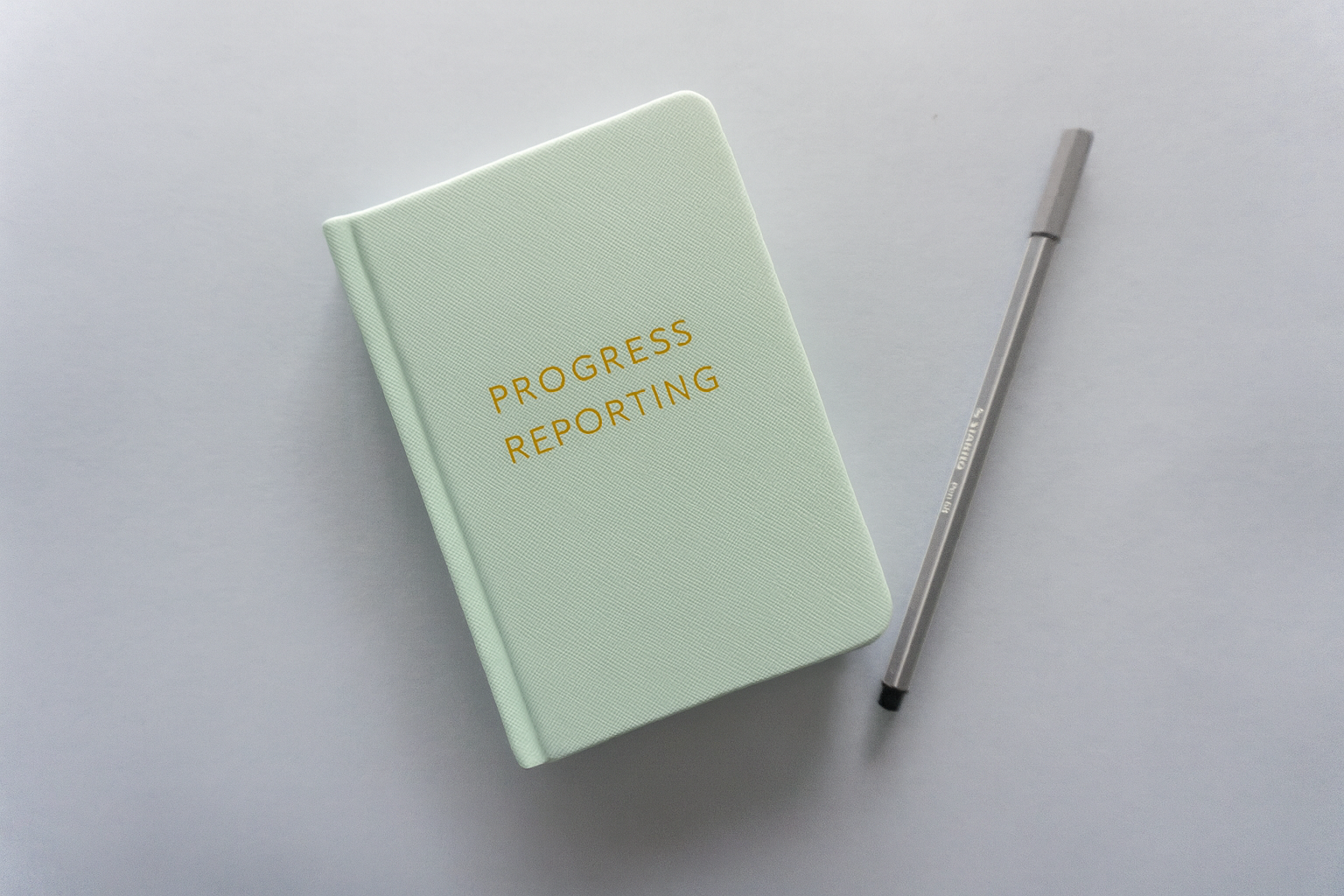
It’s 2025. We’ve got bots summarizing standups in Slack, async updates dropping before your second coffee, and dashboards so pretty and colorful that they could hang in a gallery. But here’s the thing: a daily only works if people care enough to show up for real, mentally, not just literally on Google Meet.
The point isn’t to “report your status.” It’s to check in, catch blockers early, sync priorities, and remember you’re part of a team, not just a Jira avatar floating in the ether.
Yeah, the tooling’s slick. But the magic still comes from the basics: Clarity. Rhythm. Verbal communication. Eye contact (or webcam contact). Without that, your daily probably just noise with its own calendar slot.

As you may know from my other articles, I come from the creative and non-profit sector, where you would assume things are a bit different. And when it comes to the content and intentions themselves, they are, but those and the technical industries share similar challenges too. Over the past few months, I’ve had the chance to get involved and support several WIARA projects, and while each team has its specifics, I’ve noticed that one thing stands out: the daily standup. It can be a game-changer—or just another meeting that could’ve been an email.
Thinking more about it, it’s a lot like coffee—when done right, it energizes your day; when done wrong, it just leaves a bitter aftertaste and can sometimes have the opposite effect.
“Did you know that just optimizing your daily standups can reduce meeting time by 35% while increasing delivery velocity?” Sounds great—but only if they’re done right.
So I looked closer. Compared my experiences. Spoke to folks. Read some stats. And here’s what I’ve come to realize about standups that work—and those that don’t.
But before I get into that, let me check—Are you familiar with the meaning and idea behind Daily Standups? Let’s rewind for a second.
A daily standup (sometimes called the “daily scrum”) is a short, focused meeting—usually 10 to 15 minutes—where the whole team gets together to sync up after a project has started. The name comes from the idea that everyone literally stands up to keep it brief and to the point. Some teams take it even further and “hold” the meeting while staying in the plank position to make sure everyone is as efficient as possible.
It’s one of the core rituals in Agile, but not just because it sounds cool or trendy. When done right, it saves a lot of time and frustration later on. It’s easy to see it as your team’s daily “check-in” to make sure everyone’s rowing in the same direction, spotting problems early, and keeping things moving smoothly.

In the previous segment, we covered how these things should be like theoretically. They’re meant to be short, sharp, and energizing—a quick team sync to align and unblock. But what is the reality in practice? Let’s be honest: not all standups are created equal. I’ve seen dailies that drift into the void. I’ve seen ones that felt like hostage situations. And I’ve hosted a few that turned into group therapy for feature flags.
Here’s the thing no one tells you at first: the daily itself isn’t the problem—it’s how people participate in it. The wrong format, no facilitation, and unchecked habits can pretty much turn a standup into something that drains energy instead of restoring it. We’ve all been there.
Over time, I’ve started noticing patterns. Familiar roles. Recurring vibes. It’s like every daily comes with its own unofficial cast of characters—each bringing their own flavor of dysfunction (often unintentionally) despite talking about different project teams. Actually, across the different industries as well.
So, in the spirit of honesty (and improvement), here are some of the usual suspects:
Dailies break down when the space isn’t held with intention and clear structure. Without structure, people default to comfort zones: silence, oversharing, or tuning out completely. And that’s when the real cost kicks in—not just wasted time, but missed clarity, unresolved blockers, and teams slowly drifting out of sync.
After naming the most common ones, do you recognise yourself in any of them? Maybe in one or two? The good news is that with a bit of intention, you can already make a change in your next Daily huddle. Now that we’ve laughed (or sobbed) at a few familiar standup personalities, let’s look at what the data says. Because there’s a method behind the madness—and it turns out, it’s not just you. Looking at what the research says, and the small tweaks that can make dailies... well, daily and delightful.

If you’ve ever wondered what the “ideal” daily standup should look like, you’re not alone. Agile practitioners, researchers, and team leads across the globe have been trying to crack the daily standup code for years. And surprise: there is a better way. The data backs it:
First off, standups that last between 10 and 15 minutes hit the sweet spot. Any shorter, and you risk missing important updates; any longer, and people start to zone out or get frustrated. Just like the analogy from before, it’s like a good espresso shot—short, strong, and energizing.
When it comes to team size, studies consistently show that groups of about five to nine people are ideal. Smaller than that, and you might miss out on valuable perspectives; bigger than that, and the meeting drags on, making it hard to keep everyone engaged.
Then we have the classic “three questions” format remains the most popular:
It’s simple, structured, and easy to remember, which helps teams stay focused. But many teams are also experimenting with small changes to make it more relevant to their specific workflows. As they should.
For remote teams, sharing a visual task board during the standup has become standard practice. Whether it’s Jira, Trello, or Linear, having a shared screen where everyone can see the status of tasks helps keep the conversation grounded and concrete. It’s one thing to say “I’m working on feature X,” and another to see it moving across the board.
Interestingly, the rise of async tools like Geekbot, Standuply, and others is reshaping how teams approach standups. These tools let team members fill out their updates on their schedule, which is a game-changer for distributed teams juggling different time zones and deep work blocks. Companies such as GitLab and Zapier have reported significant reductions in meeting hours—up to 35% less—after adopting async check-ins, freeing up time for more focused work. We use this approach ourselves when the development team and the PM or stakeholders are in different time zones and it helps keep everyone stay aligned without forcing anyone to wake up during the night for their “daily”.
Speaking of stakeholders, research shows they’re rarely present in daily standups. Our experience in Wiara also confirms that. Usually, they act as observers or get updates through other channels. Product managers or team leads often serve as their proxies, filtering and communicating relevant information to stakeholders without bogging down the team’s daily rhythm. A similar case is with designers and other unique elements outside of the development team, depending on the stage and type of project.
All in all, the data paints a clear picture: the best standups are short, focused, inclusive, and flexible enough to adapt to the team’s unique needs. When teams get this right, they build momentum, catch problems early, and stay aligned on what matters. Not only increasing their success rate, but also feeling content with their work, and ultimately leading to an increase in velocity. Something every good company should be aiming for.

Speaking realistically, no one is really eager to participate in a Daily that doesn’t work. For any of the reasons we covered so far. We’ve already covered the essentials, we know what it should look like, so what’s left? Well, allow me to share with you some tactics I’ve seen help teams get more out of standups:

Sometimes we get so worked up on unnecessary details and finding the right tools or methodologies that we end up forgetting the fundamentals. Here’s the thing: Standups are not about filling airtime or reporting status. They’re about connecting people, voicing blockers, and building momentum—one morning (or afternoon) at a time.. They’re about staying aligned, accountable, and agile—together. They’re the 15-minute investment that pays off across the rest of your day.
If your standups feel like a chore, don’t ditch them. Redesign them and ask yourself:
Is this helping us move forward, or just filling the calendar?
Change the format. Change the questions. Change who leads. You don’t need a new tool—you need a clearer strategy.
Because when daily check-ins actually work… You feel it. The team clicks. The workflows. And that’s what we’re here for, isn’t it? Go and make it happen.
Curious how we can support your Ops journey?
Further Thinking

Avoiding the Trap of Over-Detailing User Stories

Remote Project Management Best Practices: Real-Life Tips for Global Teams

Progress Reporting Best Practices: Momentum, Blockers, and Decisions Explained

How to Prioritize Features Without Fighting About It - Part 1

What’s in a Sprint? How We Plan, Execute, and Improve Every 2 Weeks

Five Ways to Write Good User Stories (Including Examples)

What Is Agile Really Like?

The WIARA Project Delivery Playbook: How We Manage Agile Projects from Kickoff to Launch